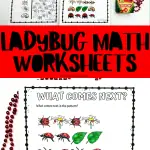Free Ladybug Math Worksheet for Preschool Counting
A ladybug math worksheet is a fun way to help young kids practice counting and number recognition while staying engaged.
With simple visuals, playful bugs, and hands-on activities, these printable pages turn early math into something kids actually look forward to.
Whether you’re working on numbers 1–10 or building basic math confidence, these worksheets are perfect for preschool and kindergarten learners.

**This post may contain affiliate links. As an Amazon Associate and a participant in other affiliate programs, I earn a commission on qualifying purchases.**
Printable Ladybug Math Activities
These themed math worksheets make early concepts like counting, number matching, and pattern recognition easier to grasp through playful repetition.
They’re great for both classroom use and at-home learning. Explore the activities below and grab your free PDF at the end.
Ladybug Count Worksheet
In this worksheet, children color and count groups of 8 leaves, 5 ladybugs, 6 ladybugs on flowers, and 7 larvae.
This helps reinforce one-to-one correspondence and builds both early math and fine motor skills.
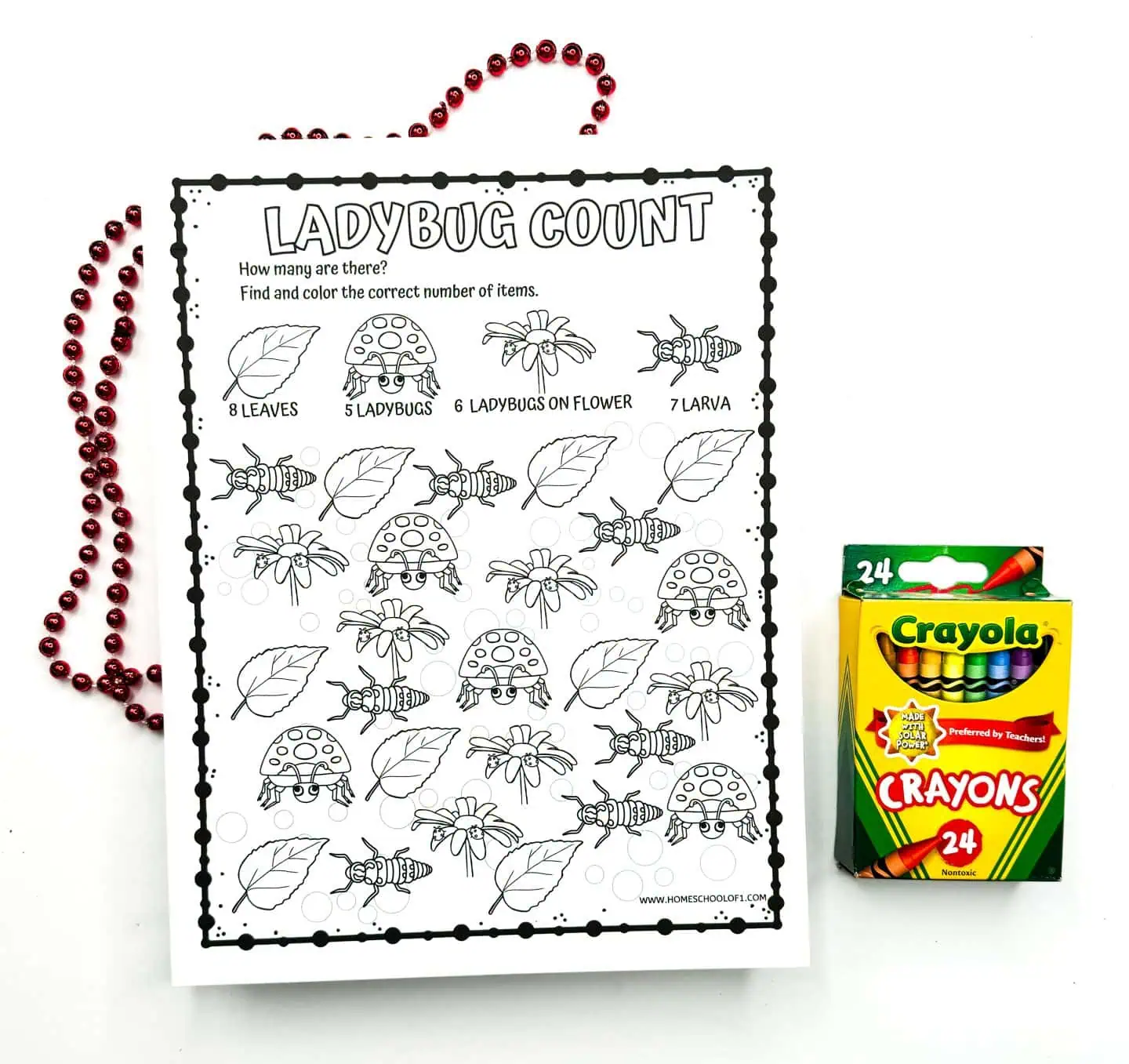
How Many Ladybugs?
Students count each row of ladybugs, leaves, and flowers, then write the totals in boxes.
It’s a great way to practice tallying, strengthen hand control, and connect visual counting with number writing.
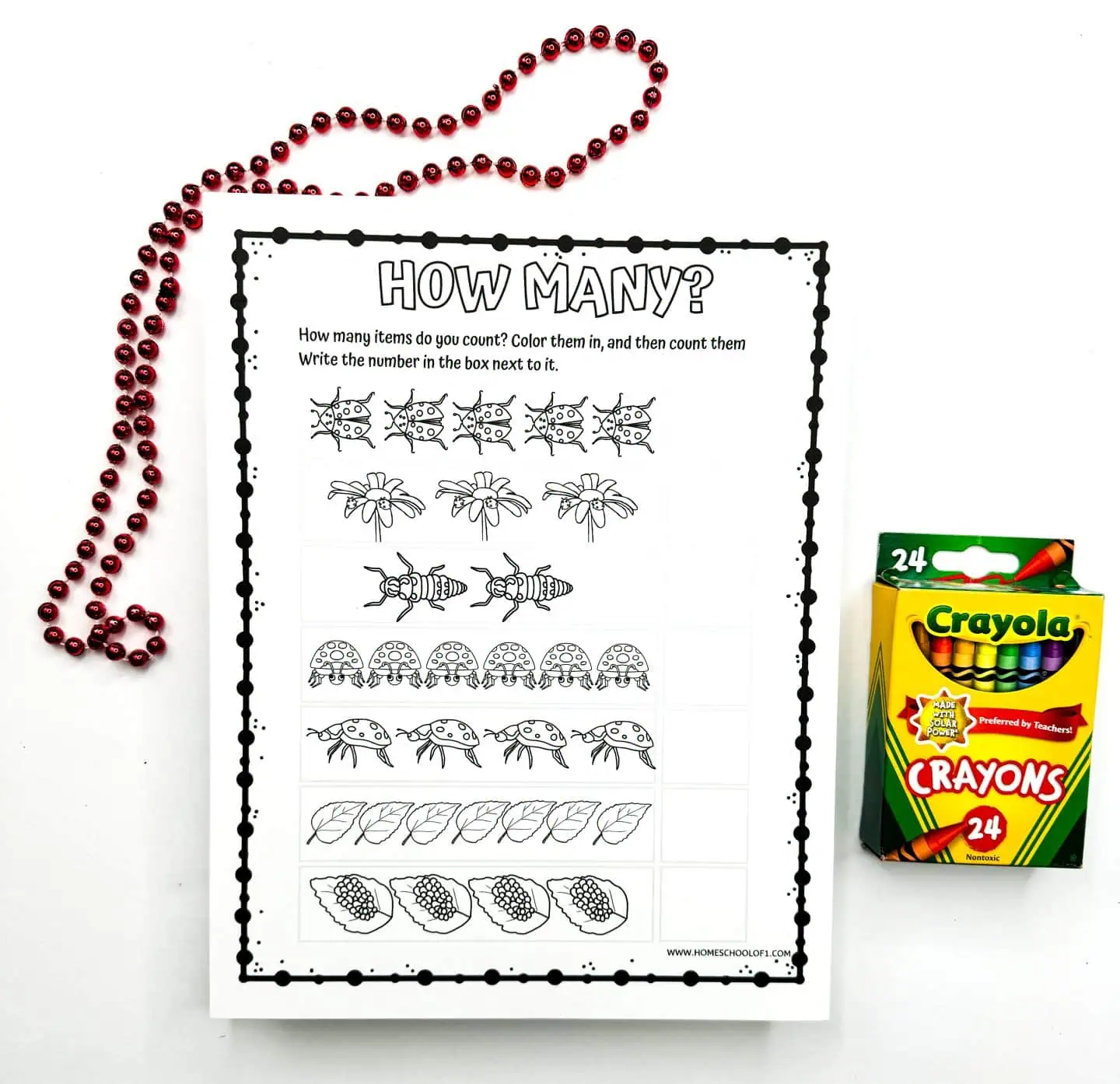
What Comes Next?
This pattern recognition worksheet uses sequences of ladybugs, leaves, flowers, and larvae.
Kids predict the next item in each pattern, helping them develop logical thinking and early problem-solving skills.

Looking for more hands-on math fun? Don’t miss our favorite top kindergarten math board games!
Let’s Count Ladybugs
In this worksheet, children color only the images that match a specific example and then count how many they find.
It blends visual discrimination, counting, and writing in one simple activity.
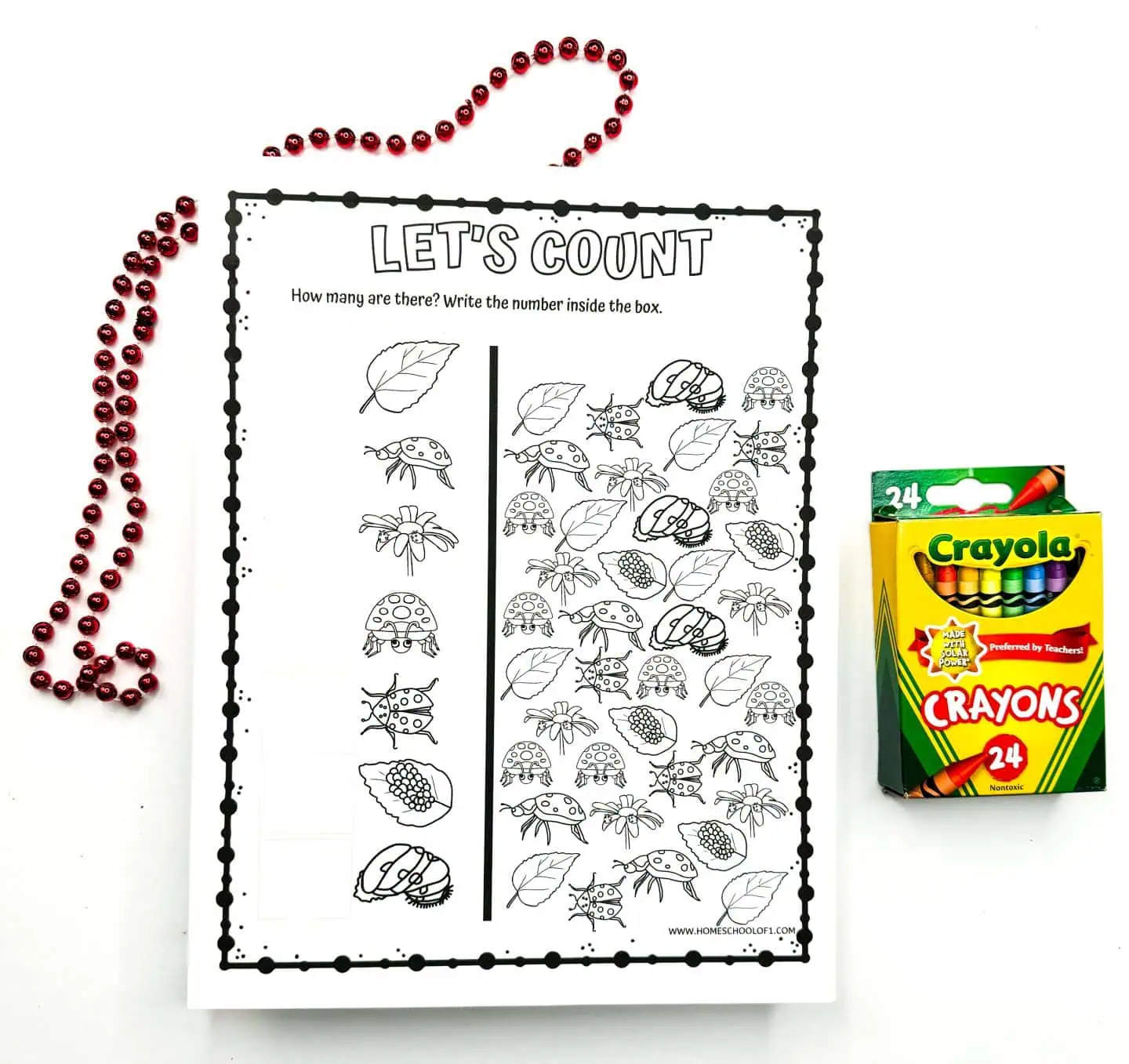
Ladybug Counting Printable
This one focuses on matching numbers to quantities. Kids count the number of ladybugs and leaves in each section and color accordingly.
It’s ideal for reinforcing numeral recognition and quantity matching in a visual way.
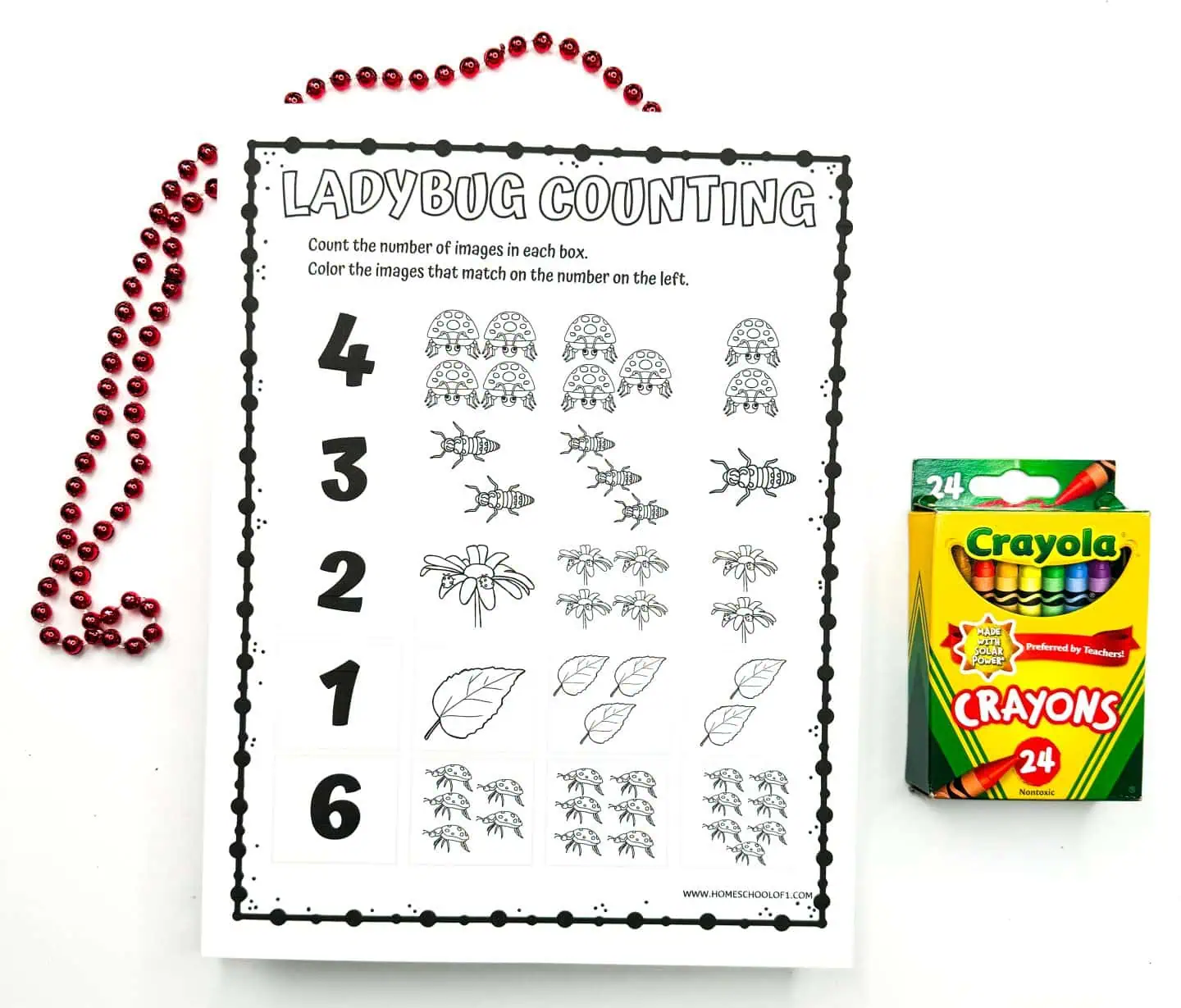
Educational Benefits
These ladybug math worksheets help kids strengthen essential early math skills, including:
- Counting & Number Recognition – Practice counting sets of objects and matching them to the correct numerals.
- Pattern Recognition – Identify and complete simple patterns using ladybugs, leaves, and flowers.
- Predicting Sequences – Strengthen logical thinking by figuring out what comes next in a sequence.
- Fine Motor Skills – Improve pencil grip and coordination through coloring, tracing, and number writing.
- Quantity Matching – Connect numbers to real quantities by counting and grouping objects.
By combining math and creativity, these worksheets make learning fun and engaging for young learners.
Enjoyed these math activities? Explore our The Grouchy Ladybug activities for even more ladybug fun!
More Ladybug Activities to Explore
If your kids enjoyed the math worksheets, here are a few more ladybug-themed activities to keep the learning going:
- Learn how a ladybug grows with our free life cycle of a ladybug worksheet and matching ladybug coloring page.
- Explore the anatomy of a ladybug with simple, kid-friendly parts of a ladybug worksheets.
- For younger learners, try our ladybug worksheets for preschool, focused on early learning basics.
- Head outside with our garden scavenger hunt and see if you can spot real ladybugs along the way!
Need to print later? Add this to your Pinterest board or share it on Facebook. You’ll have it handy whenever you’re ready to use it!
Get the Free Printable Ladybug Math Activities Here!
Ready to grab your free printable? Just pop your name and email into the form below, and it’s all yours!
Last Updated on 20 March 2025 by Clare Brown


